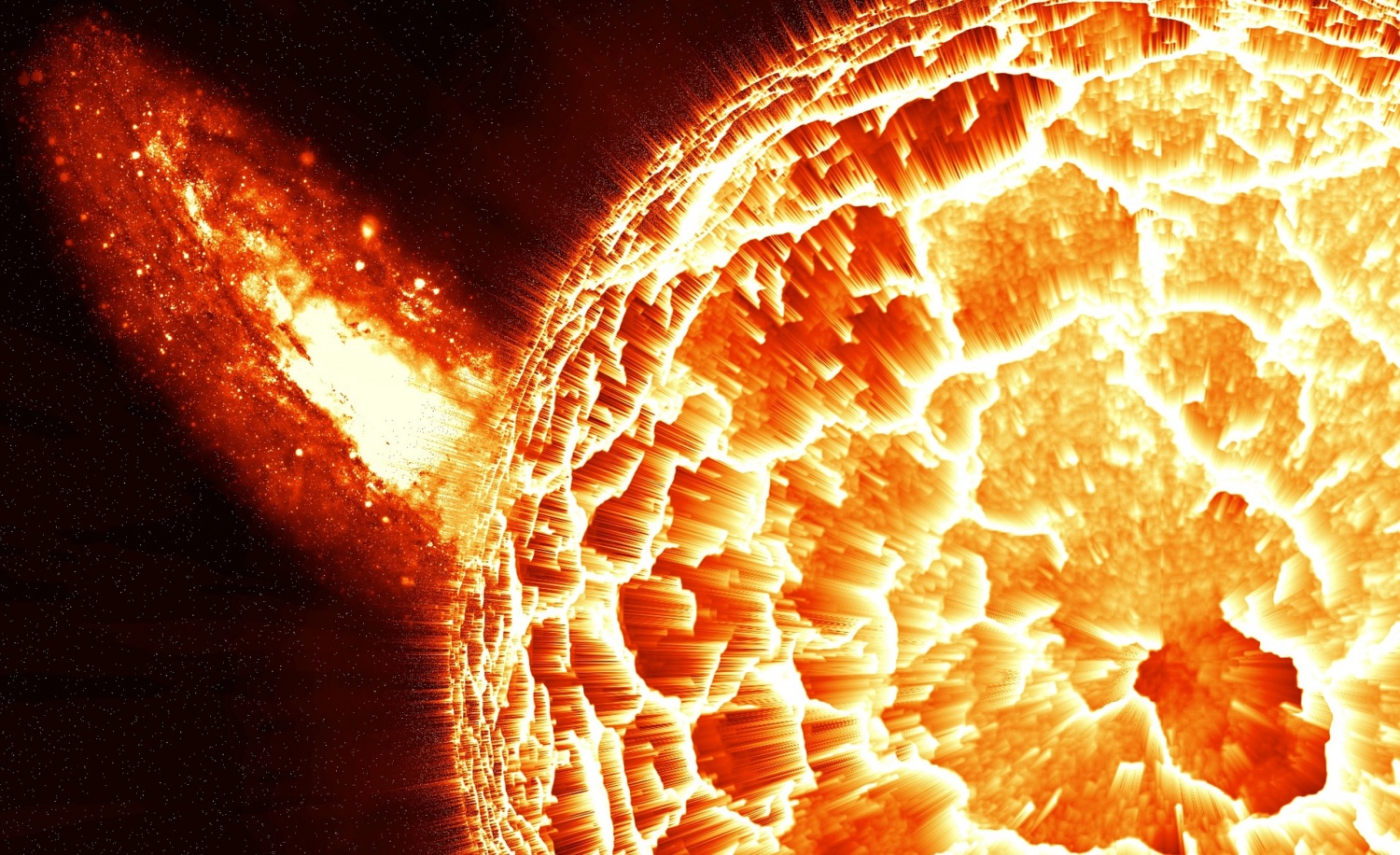
Solar Storm Incoming Within 24 Hours: How Dangerous Will It Be?
A geomagnetic storm is expected to hit Earth in the next 24 hours due to a burst of radiation that exploded from the Sun just days earlier. Fortunately, the storm is expected to be weak, with G1-class conditions predicted by the National Weather Service's Space Weather Prediction Center.Solar Storm RateGeomagnetic storms are rated 1 to 5, with 1 being the weakest and 5 being the most dangerous. With the possibility of a G1 geomagnetic storm, there could be slight power grid disturbances and minor impacts on satellite operations.Aurora, also known as the "Northern Lights," can be seen from northern Michigan and Maine to points north at high latitudes.May 14 Geomagnetic Storm This new geomagnetic storm threat is being driven by a coronal hole formed on the Sun on May 14 and the energy associated with it. Last night, an irrelevant solar wind from another coronal mass ejection reached Earth, but the effects were minor.Coronal HolesCoronal holes, or dark areas on the Sun, are now among the major generators of space weather. According to the Space Weather Prediction Center, coronal holes behave as dark areas on the Sun because they are colder than the surrounding plasma and have open magnetic field lines.These dark regions occur in the Sun's corona, which is the outermost portion of the atmosphere. During the recent solar eclipse, the solar corona was also one of the primary aspects of the Sun that scientists were most interested in studying.These properties can be seen in solar pictures in the extreme ultraviolet (EUV) and soft x-ray ranges.Related Articles: Solar Storms: Are They Dangerous?Solar WindSolar wind still flows from the Sun to Earth, but coronal holes release more powerful solar wind. Coronal holes can form anywhere in the Sun, but they are more prominent at a solar minimum. The Sun rotates once every 27 days, and coronal holes will last for many days.Permanent coronal holes are typical at the Sun's north and south poles, but they can also extend towards the equator, resulting in the broader area.Coronal holes at the Sun's equator usually result in faster solar wind reaching Earth. Coronal holes often emit G1-G2 geomagnetic storming levels, and on rare occasions, even G3 levels have been observed.What Intensifies a Solar Storm?NOAA forecasters examine these characteristics and must account for them in each forecast. If Earth is affected by a coronal hole and a coronal mass ejection is expected to hit the planet, the combined impacts could cause a larger effect more violent geomagnetic storming.Forecasters can tell when the intensified solar wind from a coronal hole will arrive at Earth by analyzing data from the DSCOVR and ACE satellites. They look for a few items in the data to figure out where the intensified solar wind will reach Earth:The speed of the solar wind increases; the temperature rises; particle density falls; and the frequency of the interplanetary magnetic field (IMF) rises.AuroraIf you're a space weather fan or an aurora chaser, you'll want to learn about coronal holes. They will continue to have a large portion of our geomagnetic activity in the future, and they will do so even during the solar minimum.Aurorasaurus, which helps you post or receive warnings and photographs of aurora activity with a group of those involved in space weather, is a good resource for citizen scientists.Possible EffectsAlthough these solar phenomena can light the skies with spectacular auroras, they can also damage batteries, power grids, and satellite and radio communications.The incident badly disrupted the small electrical and communication lines available at the time; telegraph services worldwide collapsed, with some telegraph operators reporting electric shocks.According to a June 2013 report by Lloyd's of London and Atmospheric and Environmental Research (AER) in the United States, losses in the United States could reach $2.6 trillion, or about 15% of the country's annual GDP, if the Carrington case occurred today.Monitoring InstitutionsAlthough the National Oceanic and Atmospheric Administration (NOAA) and its National Weather Service (NWS) are best known for their weather predictions, they are also in charge of "space weather."Though private entities and other organizations track and forecast space weather, the Space Weather Prediction Center is the primary source for space weather forecasts and warnings (SWPC). The SWPC is a support center of the NWS, which is part of NOAA and is based in Boulder, Colorado.The Space Weather Prediction Center is one of nine National Centers for Environmental Prediction (NCEP) that monitor current space weather activity around the clock, 365 days a year.Also Read: Molecule Commonly Found on Earth Discovered on a Distant Exoplanet WASP-33bFor more space news, don't forget to follow Nature World News!© 2021 NatureWorldNews.com All rights reserved. Do not reproduce without permission.
……Read full article on Nature World News
Technology Space
Comments
Leave a comment in Nestia App